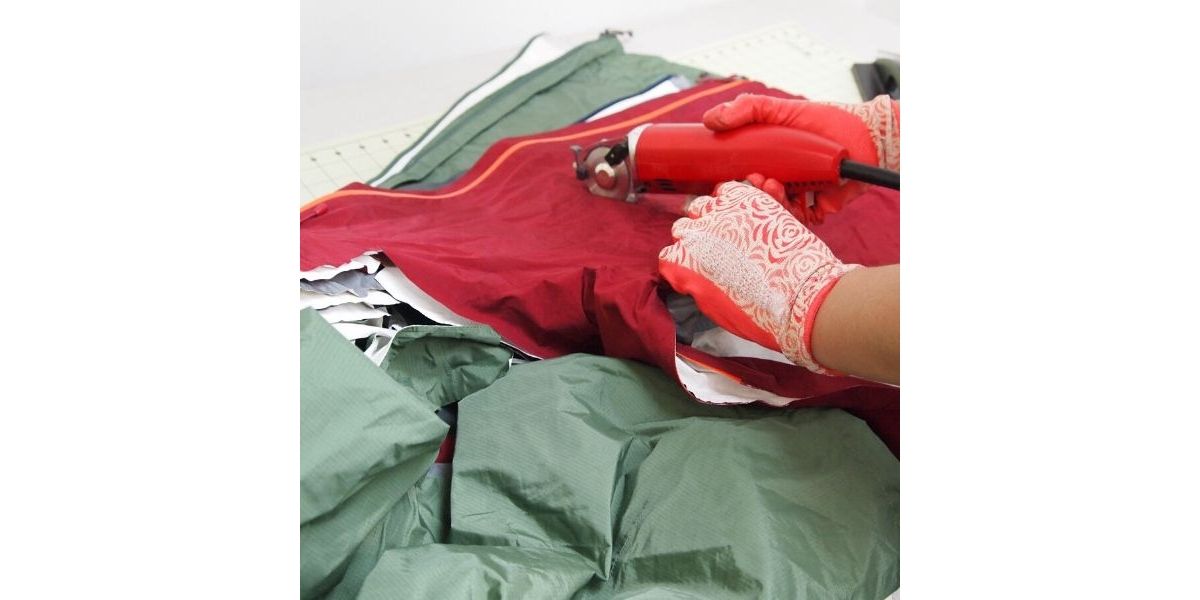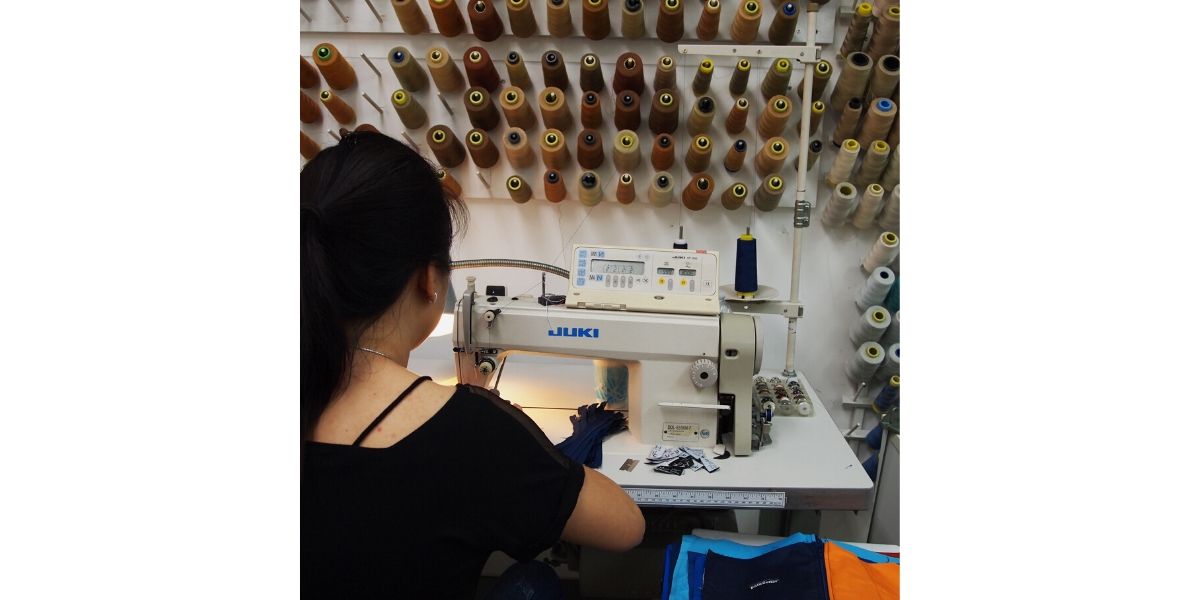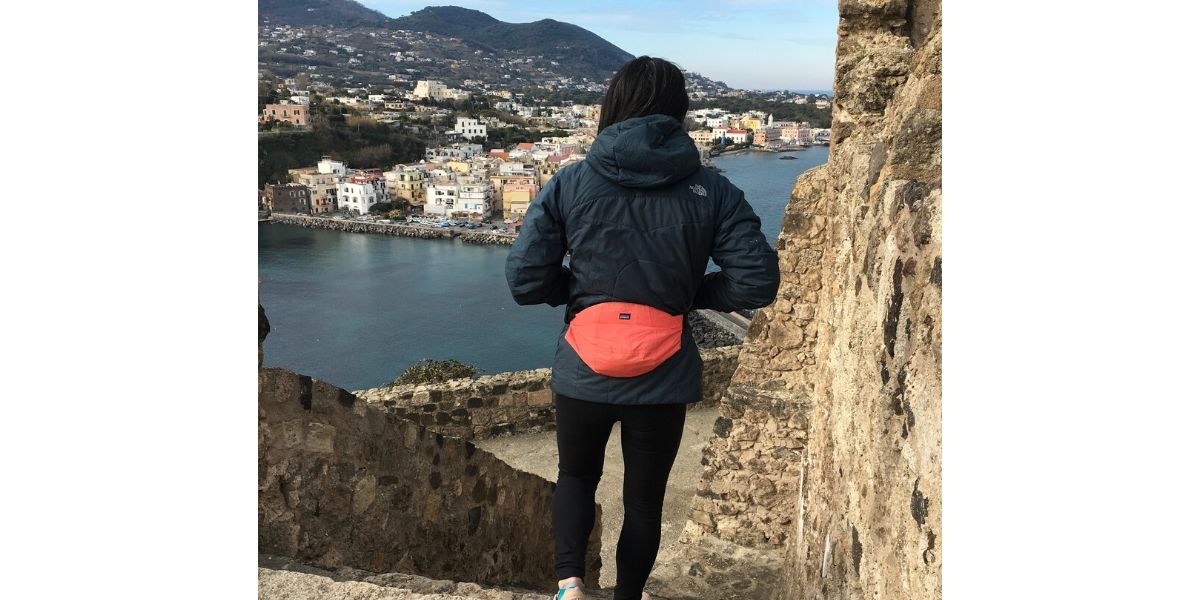Christina Johnson grew up tinkering with scraps of textiles in her parents’ tailoring and alteration store. Even as a child she saw the value in those materials. However, during an internship at a factory in India, she learned how clothing upcycling could be done on a larger scale. Christina and her mom, Liz Bordessa, decided they could start a similar business making upcycled fashion at their own store in Long Beach California.
She started by approaching companies with leftover street banners headed for the landfill. Would they let her upcycle those old banners? If she made upcycled products out of those banners, could those products be made into retail items that could be sold again? A few companies gave her a chance and Upcycle it Now was born.

Patagonia’s fanny packs
Eventually, Christina met with Patagonia to help them figure out what to do with merchandise sent back for recycling. Some materials can be conventionally recycled. But others can’t. Rain jackets for example. It’s better to upcycle old rain jackets into new products than to recycle them.
Christina and her team started upcycling otherwise unusable rain jackets into new products Patagonia could re-sell. But the hoods of the jackets were hard to work with. So Christina saved them, waiting for an opportunity to make just the right upcycled fashion item out of them.
After collecting those hoods for some time, Patagonia asked if she could make hip pouches or fanny packs. Yes! Of course she could. The hoods were upcycled into new fanny packs for Patagonia.



What is upcycling?
People think of recycling as turning a thing into something of lesser value. Instead, upcycling is taking something that was a good product that reached its end of life, and turning it into an equal or better product than it was, according to Christina.
“I like to work with the postconsumer waste because there’s so much of it. But we’re not picky. If it’s going to go to a landfill and we can make something new of it, that’s what we want to do,” Christina explained.
Post-consumer waste is any material that’s been used and is headed for recycling or the landfill. Pre-consumer waste is scrap pieces of textiles or materials that can’t be used by the manufacturer.
“Our main competitor is the landfill. The landfill takes so much product and so much material. At this point, the more upcyclers there are the better. And the more consumers are aware, the more they will seek out what we’re doing. The landfill right now is the cheapest and easiest option for people to dispose of products,” she explained.

Why is there so much textile waste?
A lot of factors play into textile waste. But Christina breaks it down into a few major contributing factors:
- The enormous amount of textiles we’re producing.
- It is cheaper and easier to create virgin fabric than to harvest used textiles.
- Lack of infrastructure to collect, sort and process used textiles.
- Lack of demand for, or indifference to, recycled over virgin.
What can conscious consumers do?
See if you can buy something second-hand at Buffalo Exchange or Poshmark or TheRealReal. Consumers have to buy those things to create a market. If you need to get rid of something, see if you can send it to a second-hand shop.
“I don’t think it’s fully on the consumer to eliminate the world’s waste. As consumers, we do need to help boost the market because I can’t do what I do unless someone buys it. You can be loyal to the brands that are doing these things. But the brands have the responsibility to figure it out. They need to create the infrastructure and processes to make this happen,” she said.
What can sustainability-minded entrepreneurs do?
If you have ideas, pitch them. Most people are afraid that this is expensive. But it doesn’t have to be. Find where someone is in need of a solution and brainstorm on it, she said.
About Upcycle it Now
Upcycle it Now is a design and manufacturing company that takes materials at their end of life and transforms them into a new product that can then reenter the market. Their mission is to support companies in creating a second life for used or unwanted textiles by designing and producing beautiful, high quality, and functional products while providing local skilled jobs for our community.
Listen to the full episode or check out Upcycle it Now to see more upcycled products Christina and her team have created.
